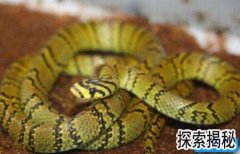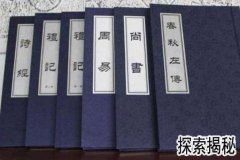初一英语下册知识点总结
初一英语下册知识点总结 篇1 1. have to do sth “必须,不得不“have to 与must 等价,有区别。 2. tie 及物动词,“系,捆绑“,tie 的现在分词是tying。Tie可数名词,”领带“。 3. ourselves“我们自己“。 4. so that “以便,为了“,引导一个表示目的的状语从句; 5. without “没有,缺乏“。Without sth 介词。 6. weak 形容词,“虚弱的,无力的“be weak in ”在……方面弱“。 7. help sb do sth 帮助某人做某事,help sb with sth,help oneself to sth 、can’t help doing sth 。 8. breathe “呼吸“动词。Breath 名词。 9. take photos 拍照 10. as+adj/adv+as one can 尽可能……“=as……as possible“。 11. that is “也就是说“,相当于that’s to say。用于同位语 12. if “如果“。引导条件状语从句,表示主句动作发生的条件,有从句的动作发生就会有主句的动作发生。主现从现,主将从用一般现在时表将来。 13.work 不及物动词“运转;运行“ 初一英语下册知识点总结 篇2 一、these和those用法 this, that, these和those是指示代词,these是this的复数形式,指时间,距离较近的或下面要提到的人或事;those是that的复数形式,指时间、距离较远或前面已经提到过的人或事物。 ①This is my bed. That is Lily’s bed. 这是我的'床。那是莉莉的床。 ②These pictures are good. 那些画很好。 ③ Are those apple trees? 那些是苹果树吗? ④在回答主语是these或those的疑问句时,通常用they代替these或those以避免重复。如: Are these/those your apples? 这些(那些)是你的苹果吗? Yes, they are. 是的,他们是。 二、名词+’s所有格 单数名词后直接加 “ ’s ”: Jim’s coat 吉姆的外套 Jeff’s mother杰夫的妈妈 以s结尾的复数名词,只加“’” Teachers’ Day教师节 the twins’ books双胞胎的书 不以s结尾的不规则的名词复数,加“ ’s ” Children’s Day 儿童节 men’s shoes男式鞋 表示两者共同拥有时,只在最后一个名词后加’s Lucy and Lily’s mother 露茜和莉莉的妈妈(共同的妈妈,一个妈妈) 表示两者各自拥有时,要在每个名词后加’s Lucy’s and Kate’s rooms 露茜和凯特的房间(各自的房间,两间房子) 初一英语下册知识点总结 篇3 1.What do you think of …?=How do you like …? 你认为……怎么样? What do you think of the movie ? =How do you like the movie ? 你认为这部影片怎么样? 2.Why don’t you +动词原形?=Why not +动词原形?为什么不……呢? Why don’t you have a picnic this weekend ?=Why not have a picnic this weekend ? 这个周末为什么不去野餐呢? 3.not …until …直到……才…… The children didn’t come home until it was dark . 孩子们直到天黑才回家。 4.The number of …is…的数里是…… The number of students in our school is 1,000. 我们学校的学生数量是1000。 5.How much+不可数名词…?多少……? How much milk do you want ? 你想要多少牛奶? 6.How many +可数名词复数…?多少……? How many English books do you have ? 你有多少英语书? 7.Remember (not) to …记得(不)做…… Remember to take an umbrella with you .It’s raining outside . 记得带上雨伞。外面正在下雨。 8.How are you feeling ? 你感觉怎么样? -How are you feeling now ,Nancy ? 南希,你现在感觉怎么样? -Great . 很好。 9.It is +形容词+to do sth .做某事是…… It is dangerous to play with fire .玩火很危险。
初一下册英语知识点总结
新人教版初一下册英语知识点总结一 1.do one’s homework 做某人的作业 do housework 做家务 2.talk on the phone 在电话里交谈, talk about……谈论…… talk to(with)sb 和某人交谈 3.write a letter 写信 write a letter to sb 给某人写信 4.play with…… 和……一起玩 5.watch TV 看电视 TV show 电视节目 6.wait for sb/sth 等待某人/某物 7.some of…… ……中的一些 8.in the first photo 在第一张照片里(介词用in,序数词前面有the) in the last photo 在最后一张照片里 a photo of one’s family 某人的家庭照片 9.at the mall 在购物街 at/in the library 在图书室 at/in the pool 在游泳池 10.read a book = read books = do some reading看书\阅读 11.thanks for = thank you for 为某事而感谢(后接动词要用v-ing) 新人教版初一下册英语知识点总结二 1. 他正在干什么? What is he doing? 他正在吃饭。He is eating dinner. 他正在哪里吃饭?Where is he eating dinner他正在家里吃饭。He is eating dinner at home. 2. 你想什么时候去?When do you want to go? 让我们六点钟去吧。Let’s go at six o’clock. 3. 他正在等什么? What is he waiting for? 他正在等公交车。 He is waiting for a bus. 4. 他们正在和谁说话? Who are they talking with? 他们正在和Miss Wu说话。They are talking with Miss Wu. 5. 你们正在谈论什么? What are you talking about? 我们正在谈论天气。We are talking about the weather. 6. 他们都正在去上学。They are all going to school. 7.这儿是一些我的照片。Here are some of my photos. 这儿是一些肉。 Here is some of meat. (some of meat不可数,故用is) 8.谢谢你帮我买这本书。 Thank you for helping me buy this book. 9.family 家;家庭。强调“整体”,是单数;强调“成员”时,是复数。 His family has a shower. 他们家有一个淋浴。 His family are watching TV. 他全家在看电视。 新人教版初一下册英语知识点总结三 1 want to do sth 想要作某事 2 give sb sth = give sth to sb 给某人某物 / 把某物给某人 3 help sb do sth 帮助某人作某事 Eg: I want to help my mother do some housework at home. 4 help sb with sth 帮助某人谋事 Eg: I want to help my mother with some housework at home 5 in the day 在白天 6 at night 在晚上 7 talk with/ to sb 和----谈话 8 be busy doing sth 忙于做某事 Eg: He is busy listening to the teacher. 9 in a hospital 在医院 10 work/ study hard 努力工 11 Evening Newspaper 晚报 新人教版初一下册英语知识点总结四 1 询问职业的特殊疑问词是what; 有三种主要句式 ① What + is / are + sb? Eg. What is your mother? ② Whhat + does/ do + sb + do? Eg. What does his brother do? ③ What + is/ are + 名词所有格/ 形容词性物主代词 + job? Eg . what is your job? 2 People give me their money or get their money from me. 3 Sometimes I work in the day and sometimes at night. 4 I like talking to people. 5 I work late. I’m very busy when people go out to dinners. 6 Where does your sister work? 7 then we have a job for you as a waiter. 8 Do you want to work for a magazine? Then come and work for us as a reporter. 9 Do you like to work evenings and weekends? 10 We are an international school for children of 5-12.
七年级下册英语语法重点
一. 词汇
⑴ 单词
1. 介词:in, on, under, behind, near, at, of
1). in表示;中;在内。例如:
in our class 在我们班上
in my bag 在我的书包里
in the desk 在桌子里
in the classroom 在教室里
2). on 表示;在;;上;。例如:
on the wall 在墙上
on the desk 在桌子上
on the blackboard 在黑板上
3). under表示;在;;下;。例如:
under the tree 在树下
under the chair 在椅子下
under the bed 在床下
4). behind表示;在;;后面;。例如:
behind the door 在门后
behind the tree 在树后
5). near表示;在;;附近;。例如:
near the teachers desk 在讲桌附近
near the bed 在床附近
6). at表示;在;;处;。例如:
at school 在学校
at home 在家
at the door 在门口
7). of 表示的;。例如:
a picture of our classroom 我们教室的一幅画
a map of China 一张中国地图
nbsp;
2. 冠词 a / an / the:
冠词一般位于所限定的名词前,用来署名名词所指的人或事物。冠词有不定冠词和定冠词两种。不定冠词有两个形式,即a和an。a用在以辅音音素开头的词前,如a book; an用在以元音音素开头的字母前,如an apple.
a或an与可数名词单数连用,泛指某类人或某物中的一个。
This is a cat.
这是一只猫。
It#39;s an English book.
这是一本英语书。
His father is a worker.
他的爸爸是个工人。
the既可以用在可数名词前,也可以用在不可数名词前,表示某个或某些特定的人或事物,也可以指上文提到过的人或事物。
Who#39;s the boy in the hat?
戴帽子的男孩是谁呀?
------ What can you see in the classroom?
------ I can see a bag.
------ Where#39;s the bag?
------ It#39;s on the desk.
------- 你能在教室里看到什么呀?
------ 我能看见一个书包。
------ 书包在哪呀?
------ 在桌子上。
3.some和any
①在肯定句中用some.例如:
There are some books on the desk.桌子上有一些书。
Lucy has some good books露西有一些好书。
②在疑问句和否定句中用any。例如:
Is there any ink in your pen?你的钢笔里有墨水吗?
Do you have any brothers and sisters?你有兄弟姐妹吗?
There isn#39;t any water in the glass.杯子里没有水。
⑵记住它们的特殊用法。
①some亦可用于表示盼望得到对方肯定的答复或表示建议、委婉请求的疑问句中,这一点我们不久就会学到。例如:
Would you like to have some apples?你想吃苹果吗?
②any也可用于肯定句中,表示quot;任何的quot;。例如:
Any one of us can do this.我们当中任何一个都能做这个。
some 和any的用法是经常出现的考点,希望大家能准确地掌握它们的用法。
4.family
family看作为一个整体时,意思是quot;家庭quot;,后面的谓语动词be用单数形式 is ;如把family看作为家庭成员时,应理解为复数,后面的谓语动词be应用are。
My family is a big family. 我的家庭是个大家庭。
My family are all at home now. 我的家人现在都在家。
Family强调由家人组成的一个集体或强调这个集体中的成员。home指个人出生、被抚养长大的环境和居住地点。 house指quot;家quot;、quot;房屋quot;,侧重居住的建筑本身。
His family are all workers. 他的家人都是工人。
My home is in Beijing. 我的家在北京。
He isn;t at home now. 他现在不在家。
It;s a picture of my family. 这是一张我全家的照片。
5. little的用法
a little dog 一只小狗,a little boy 一个小男孩。little常用来修饰有生命的名词。
*但little还可表示否定意义,意为quot;少的quot;,加不可数名词。
There is little time. 几乎没时间了。
There is little water in the cup. 杯中水很少。
⑵ 词组on the desk 在桌子上
behind the chair 在椅子后
under the chair 在椅子下面
in her pencil-box 在她的铅笔盒中
near the door 在门附近
a picture of a classroom 一个教室的图片
look at the picture 看这张图片
the teacher#39;s desk 讲桌
a map of China 一张中国地图
family tree 家谱
have a seat 坐下,就坐
this way 这边走
二. 日常用语
1. Come and meet my family.
2. Go and see. I think Li Lei.
3. Glad to meet you.
4. What can you see in the picture?
I can see a clock / some books.
5. Can you see an orange?
Yes, I can. / No, I can#39;t.
6. Where#39;s Shenzhen?
It#39;s near Hong Kong.
7. Let me see.(口语)让我想想看。
see 在这是quot;明白、懂了,不可译作;看见。例如:
8. Please have a seat.
seat表示quot;座位quot;,是个名词。have a seat表示quot;就坐quot;,也可以说take a seat, 和sit down的意思相同。
nbsp;
三. 语法
1. 名词所有格
名词如要表示与后面名词的所有关系,通常用名词所有格的形式,意为quot;hellip;hellip;的quot;。一般有以下几种形式:
(1). 一般情况下在词尾加quot;#39;squot;。例如:
Kate#39;s father Kate的爸爸
my mother#39;s friend 我妈妈的朋友
(2). 如果复数名词以s结尾,只;。例如:
Teachers Day 教师节
The boysgame 男孩们的游戏
(3). 如果复数名词不以s结尾,仍加;。例如:
Children Day 儿童节
Women Day 妇女节
(4). 表示两个或几个共有时,所有格应加在后一个名词上。例如:
Lucy and Lils room Lucy 和Lily的房间
Kate and Jim father Kate 和Jim的爸爸
a map of China 一幅中国地图
the name of her cat 她的猫的名字
a picture of my family 我的家庭的一张照片
the door of the bedroom 卧室的门
2. 祈使句
祈使句主要用来表示说话人的请求、命令、建议、叮嘱等意图。祈使句一般不用主语,读时用降调。为使语气委婉、礼貌,常在句首或句尾加please 。在句尾时,please前多用逗号。
(1). 祈使句肯定形式的谓语动词一律用动词原形。
Go and see. 去看看。
Come in, please. 请进。
(2). 祈使句的否定形式常用don#39;t于句首。
Don#39;t look at your books. 不要看书。
Don#39;t play on the road. 不要在马路上玩。
nbsp;
3. There be 的句子结构
There be是一个;存在;句型,表示;有的意思,
肯定句的形式为:There be + 名词(单数或复数)+地点状语或时间状语。
be动词单复数的确定,看be后边第一个名词,当所接主语为单数或不可数名词时,be动词形式为is;当所接主语为复数名词时,be动词为are;当be动词后接两个以上主语时,be动词与最临近主语保持数上的一致。意思为quot;某地有某人或某物quot;。如:
There is an eraser and two pens on the desk. 桌子上有一块橡皮和两支钢笔。
There are two pens and an eraser on the desk. 桌上有两支钢笔和一块橡皮。
(1)there be的否定句,即在be的后面加上not。
否定形式为:There be + not + (any) + 名词+地点状语。
There is not any cat in the room. 房间里没猫。
There aren#39;t any books on the desk. 桌子上没书。
(2)there be句型的疑问句就是将be提到句首:Be there + (any) +名词+地点状语?肯定回答:Yes, there is / are. 否定回答:No, there isn#39;t / aren#39;t.
---Is there a dog in the picture? 画上有一只狗吗?
---Yes, there is. 有。
---Are there any boats in the river? 河里有船吗?
---No, there aren#39;t. 没有。
nbsp;
(3)特殊疑问句:How many . . . are there (+地点状语)?quot;某地有多少人或物?quot;回答用There be . . .
There#39;s one. / There are two / three / some . . .
有时直接就用数字来回答。One. / Two . . .
---How many students are there in the classroom? 教室里有多少学生?
---There#39;s only one. / There are nine. 只有一个。/有九个。
(4)如果名词是不可数名词,用:How much + 不可数名词 + is there + 地点状语?
How much water is there in the cup? 杯中有多少水?
How much food is there in the bowl? 碗里有多少食物?
七下英语语法有哪些?
七下英语语法如下:1、名词性物主代词:相当于与之相对应的形容词性物主代词名词。2、情态动词can没有人称和数的变化,之后要加动词原形。3、表示计划到某地去,谓语动词go与going重复,一般只说be going to 地点。4、以重读闭音节结尾且一个元音字母+一个辅音字母(注意除开字母组合如show –showing, draw-drawing)要双写最后的辅音字母再加ing。5、现在进行时:表示动词在此时正在发生或进行就使用进行时态,结构为sb be v-ing sth+ 其它。





